20 Best Types of Basil to Grow for Fresh Flavors
Planting several types of basil is the best way to sample this herb's delicious diversity.
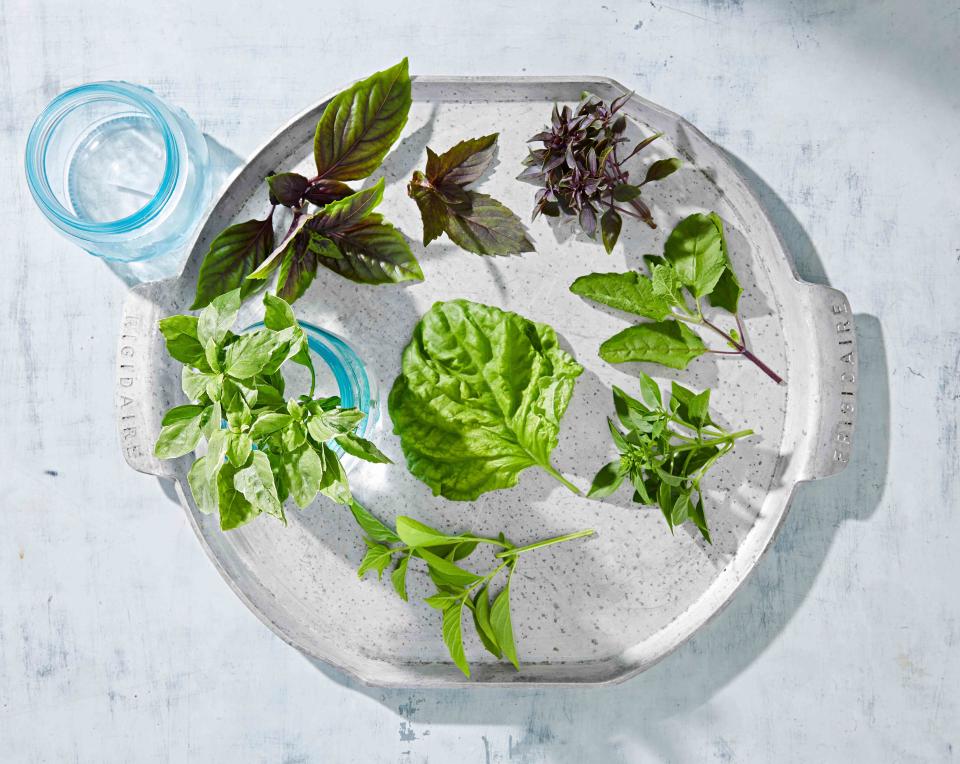
Marty Baldwin
Basil is one of summer's quintessential culinary herbs. In the garden, it thrives in the heat. And it's a key player in all kinds of warm-weather dishes, including pesto, caprese salads, and refreshing cocktails. But this summer annual has serious range: It can be ornamental, growing in dramatic columns or globe shapes; it can be spicy, lending intense and nuanced flavors to all kinds of cuisines; and it can be colorful, with flowers that look lovely in container plantings and window boxes, not to mention flower arrangements. Here are 20 of the best types of basil to grow in a summer garden.
'African Blue'
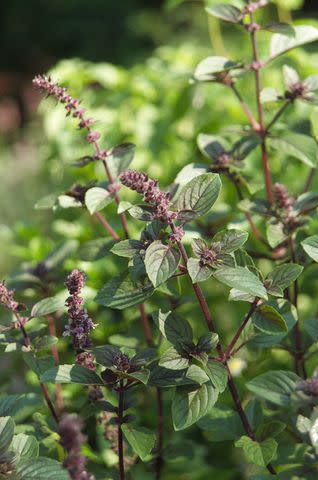
Marty Baldwin
The unusual, abundant pink flowers on this type of basil are beloved by bees in the garden, and add a flourish to summer salads. It grows 18 to 24 inches tall.
'Amethyst'
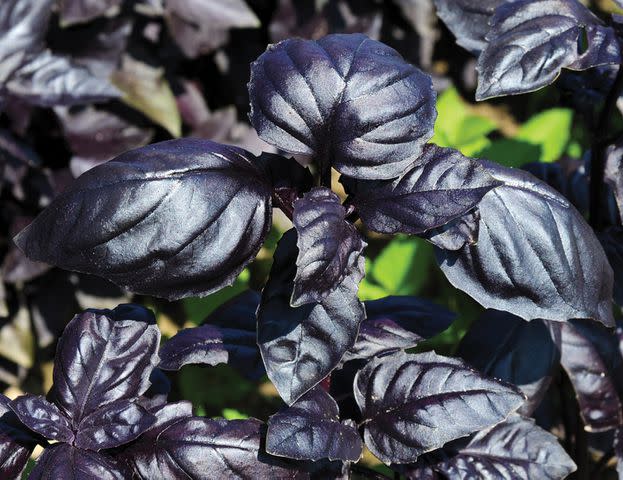
Courtesy of Johnny's Selected Seeds
Add some color to your kitchen garden with this purple form of the classic Genovese Italian basil. 'Amethyst' has large, nearly black leaves on 16- to 20-inch plants and a similarly sweet flavor.
'Aristotle'
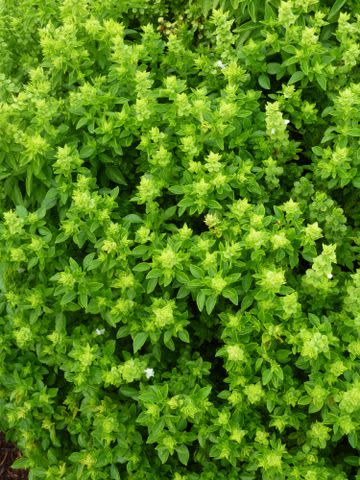
Denny Schrock
Greek types of basils have smaller leaves and more compact habits than their Italian or Thai counterparts. Growing in a tidy mound up to a foot tall, 'Aristotle' works especially well in a container herb garden.
'Aromatto'
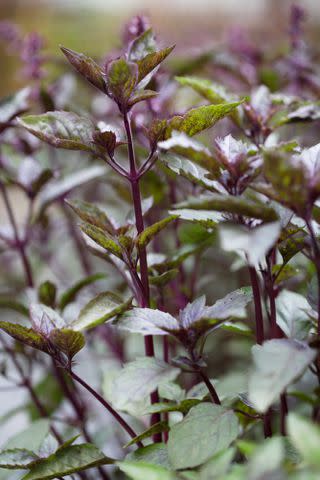
Chris Benzakein
Reaching up to 24 inches tall, this plant has sturdy purple stems, green-and-purple leaves, and dark purple flowers. Leaves have a spicy cinnamon scent and sweet flavor.
'Boxwood'
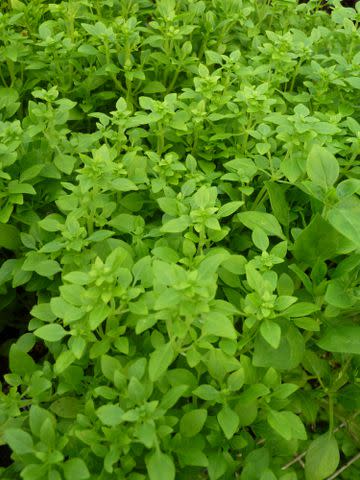
Denny Schrock
This basil is almost as tidy-looking as a boxwood shrub, and certainly as ornamental. Growing to about a foot tall, the plant has small leaves and produces spikes of pale lavender flowers.
'Cardinal'
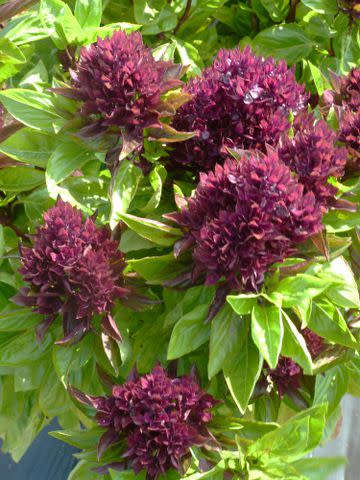
Denny Schrock
The big purple flowers on this basil variety grab attention in gardens and bouquets. Plus, the spicy-sweet flavor of the leaves stand out in whatever you're cooking. It typically tops out at 24 to 30 inches tall.
'Cinnamon'
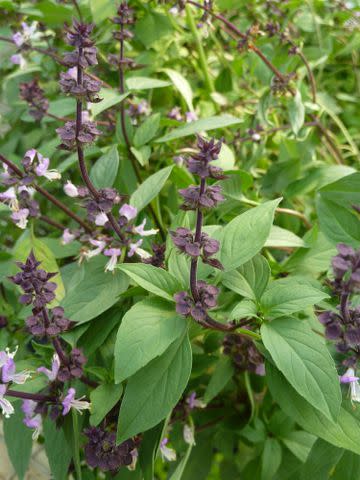
Denny Schrock
True to the plant's name, the green leaves of this type of basil have a strong cinnamon flavor, with a hint of mint too. Purple bracts on the plant, which reaches 26-30 inches tall, produce flowers that look and taste great as garnishes.
'Devotion DMR'
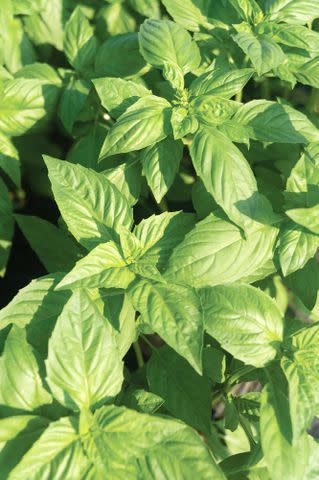
Courtesy of Johnny's Selected Seeds
Plant breeders at Rutgers University recently took the sweet basil of pesto fame, and improved upon it, making it more resistant to powdery mildew and other diseases. This basil variety reaches 18 to 20 inches tall.
'Everleaf Thai Towers'
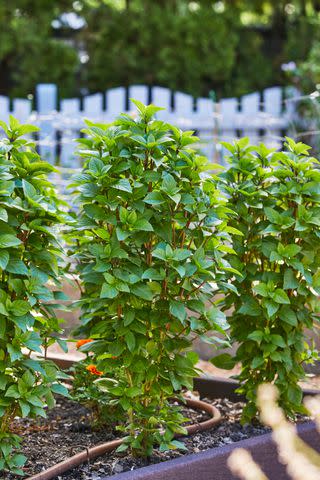
Marty Baldwin
Growing in an upright column up to 3 feet tall, this type of basil can lend structure to the edge of a flowerbed. It has a licorice flavor that's typical of Thai basils.
'Floral Spires White'
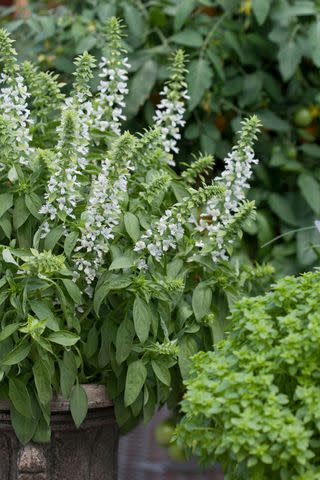
Justin Hancock
This Thai type of basil produces spikes of delicate, scented white flowers. Topping out t 8 to 10 inches tall, it's ideal for a container or window box.
'Genovese'

Marty Baldwin
Perhaps the best-known type of basil, 'Genovese' is most often used for making Italian pesto. It has big, sweetly flavored leaves on 18- to 24-inch-tall plants.
Holy Basil
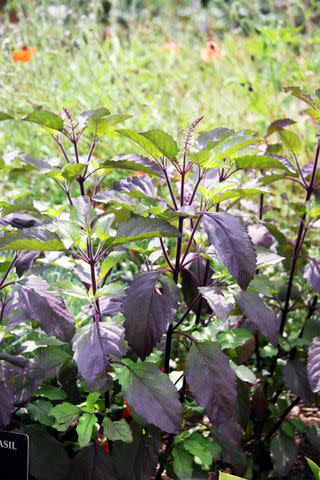
Holly Shimizu
Also known as tulsi, holy basil has green leaves on purple stems with a pungent clove fragrance. It grows to about 16 to 22 inches tall.
'Magical Michael'
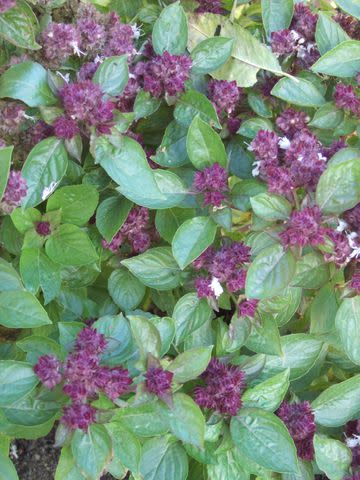
Denny Schrock
This award-winning basil variety is prized for its good looks—it's exceptionally uniform, with purple-and-white flowers—as well as its aromatic, sweet leaves. Plants typically reach 15 inches tall.
'Mrs. Burns Lemon'
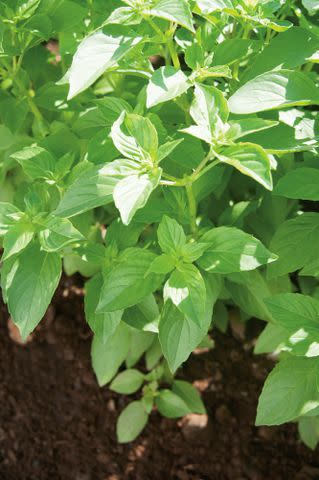
Courtesy of Johnny's Selected Seeds
This type of basil tastes and smells lightly of citrus. Its leafy stems, which can reach 2 feet in length, are also popular with florists for summer bouquets.
'Osmin'
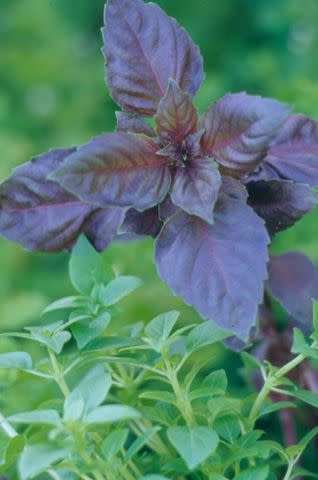
Peter Krumhardt
Producing glossy, dark maroon leaves and pink flowers, 'Osmin' stands out in an herb garden's sea of green. It grows quickly, reaching up to 24 inches tall.
Related: This Colorful Herb Garden Plan Enhances Your Yard and Dinner Plate
'Pesto Perpetuo'
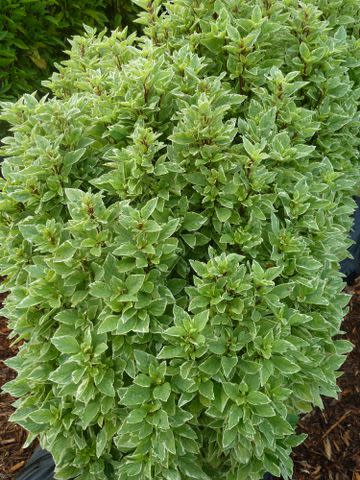
Denny Schrock
The variegated leaves of this basil variety are pretty in both gardens and salads. The non-flowering columnar plant reaches up to 24 inches tall.
'Serrata'
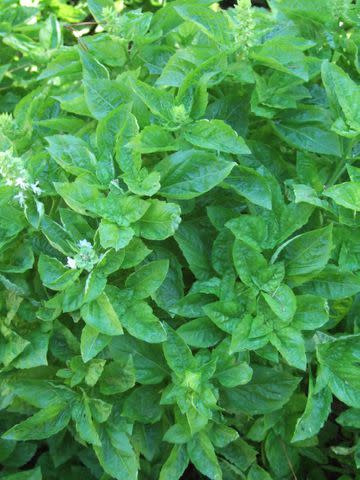
Denny Schrock
This basil has distinct serrated leaves on bushy plants that reach 12 to 16 inches tall. It's a South Asian type of basil, so expect a bit of spiciness.
'Purple Ruffles'
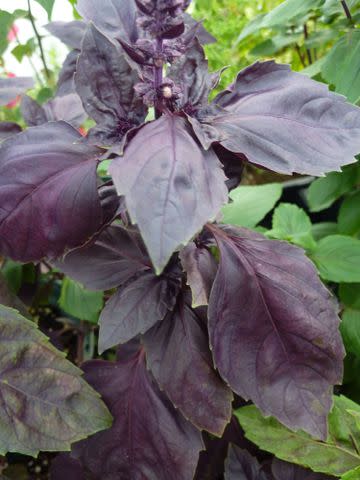
Denny Schrock
Its unusual crinkled, serrated purple leaves and fast and reliable growth made this type of basil an award winner when it was introduced in the 1980s. It has a sweet flavor with hints of anise and cinnamon.
'Spicy Globe'
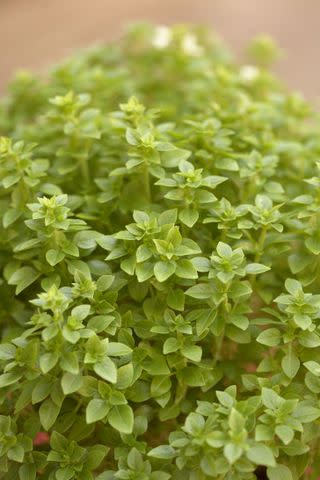
Dean Schoeppner
Tight on space? This type of basil forms an 8-inch ball that's compact enough for a window box or a pot; it's covered in spicy little leaves.
'Tuscany'
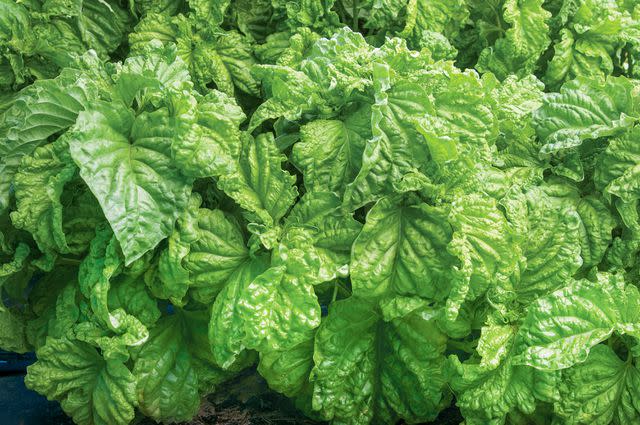
Courtesy of Johnny's Selected Seeds
Big, puckered leaves reach up to 5 inches long on plants that grow up to 16 inches tall. They have a mild flavor with a hint of anise.
To grow the widest variety of basil, you'll want to start from seeds (Johnny's Seeds and Eden Brothers are excellent sources). If you use a lot of basil in the kitchen, plant a whole row of different varieties in your vegetable garden. Or, to make harvesting basil easy and to enjoy the scent as you come and go, place a few basil plants in pots right by the kitchen door. No matter which varieties you try—and we encourage you to try many!—basil does best in full sun with regular watering.
For more Better Homes & Gardens news, make sure to sign up for our newsletter!
Read the original article on Better Homes & Gardens.

